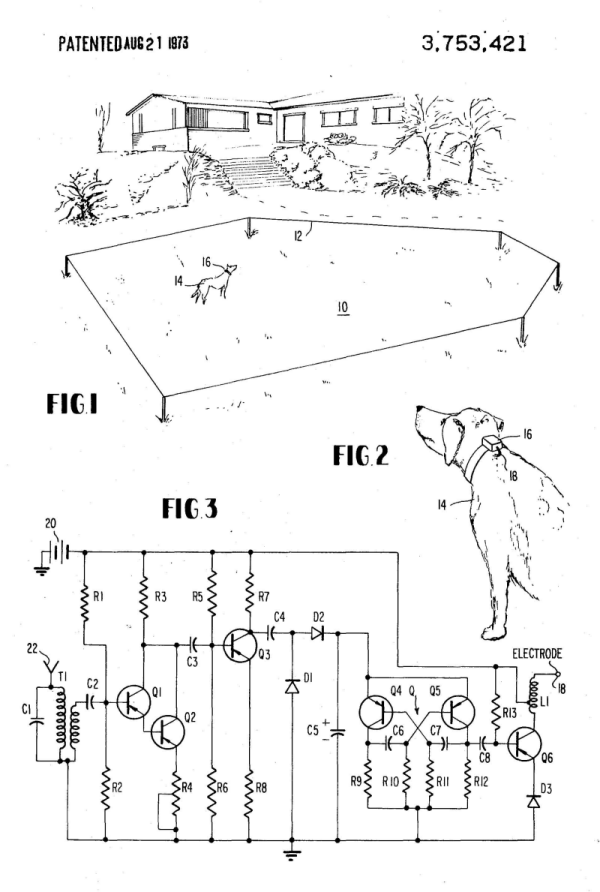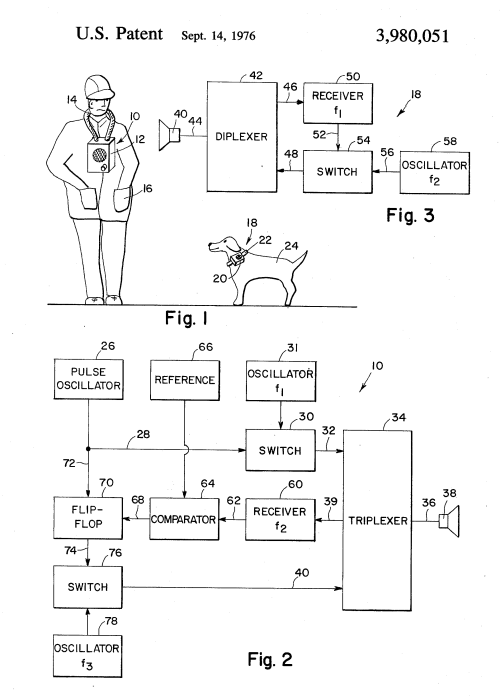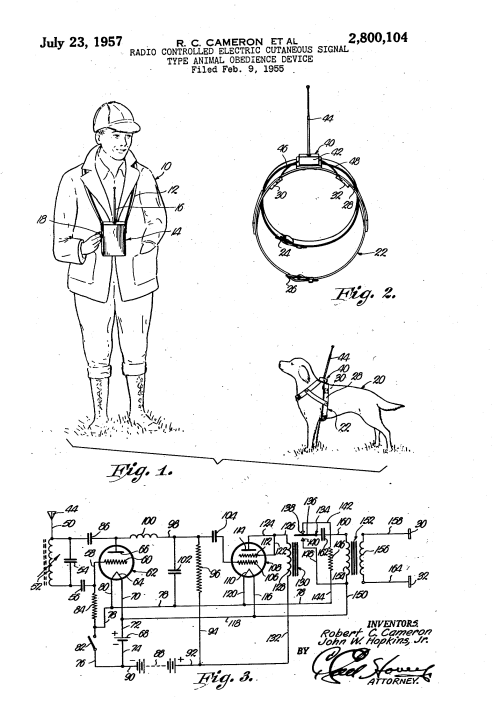Electric Underground Dog fence- WTF?
#1
Elite Member
Thread Starter
iTrader: (6)
Join Date: Feb 2013
Location: A cave in Va
Posts: 3,395
Total Cats: 456
I have one of those underground electronic barrier systems. I guess it sends an am signal to the collar on the dog, so the wire is basically a huge antenna. I installed it (2000 feet of wire) and used silver solder to join the spices, 4 of them. The system is very inconsistent in its ability to signal to the collar. So I call customer service..
They say that I cannot solder the wires, the solder joints provide additional resistance. Told me to just use wire nuts and silicone to seal them up.
Question to MT- does this sound plausible to you? could an excellent shiny silver joint really be worse than a wire nut? I am reluctant to dig up and replace all of the joints just to experiment, but I dont have a lot of choice. Just curious what some of you think.
They say that I cannot solder the wires, the solder joints provide additional resistance. Told me to just use wire nuts and silicone to seal them up.
Question to MT- does this sound plausible to you? could an excellent shiny silver joint really be worse than a wire nut? I am reluctant to dig up and replace all of the joints just to experiment, but I dont have a lot of choice. Just curious what some of you think.
#3
Former Vendor

iTrader: (31)
Join Date: Nov 2006
Location: Sunnyvale, CA
Posts: 15,442
Total Cats: 2,100
Could be. Shitty solder joints definitely increase resistance. I'm not saying yours are shitty, but I am saying that most of the people they talk to probably suck at soldering. Just use butt splices if wire nuts scare you, but your entire house is done with wire nuts.
#8
Tweaking Enginerd

iTrader: (2)
Join Date: Mar 2013
Location: Boulder, CO
Posts: 1,778
Total Cats: 360
If we assume your solder joints are in good shape, then I call BS on the wire nuts will make it work theory. This isn't a resonant antenna design, so conductivity through the joint is all that matters. Good solder solder joints typically have milliohms of resistance.
use a DMM to measure the end to end resistance. Ask the company for that specification.
use a DMM to measure the end to end resistance. Ask the company for that specification.
#9
Boost Pope


iTrader: (8)
Join Date: Sep 2005
Location: Chicago. (The less-murder part.)
Posts: 33,050
Total Cats: 6,608
But otherwise, this. There is no possible way in which a mechanical join (wire nut, butt splice, etc) is going to provide a superior electrical connection to a properly soldered join.
That having been said, silver solder, along with all other lead-free solder, sucks for hand-assembly use. I very much prefer the good ole' 63/37, as do most people who aren't encumbered by RoHS regulations. It's much more forgiving, as it doesn't undergo a plastic phase as it transitions from liquid to solid.
But yeah, I'm assuming that you don't totally suck at soldering, and joining in the BS call.
I'm also a realist. If customer support is gonna push back on you until they can tick off the box on their script that says "customer has used wire nuts," well, you might tell them that you dug up the whole fence and re-laid it with wire nuts and silicone.
Serious question: is the wire in contact with, or near, any metallic objects? Pipe, re-bar, Hustler's mom's old *****, etc?
#10
Elite Member
Thread Starter
iTrader: (6)
Join Date: Feb 2013
Location: A cave in Va
Posts: 3,395
Total Cats: 456
I think im going to measure the resistance of 500' of wire vs. a soldered section of the same length.
#11
I good solder joint is better than wire nuts, but most people I've met can't solder for ****. Just because it looks good doesn't mean that it is. It's less flexabile than the wire too, so it may have been good when soldered, then cracked when it was buried.
Passing a frequency through something can cause issues that a straight ohm test would be OK with.
Can you setup a new loop on top of the ground for a few days to see if the problem goes away?
Passing a frequency through something can cause issues that a straight ohm test would be OK with.
Can you setup a new loop on top of the ground for a few days to see if the problem goes away?
#12
Elite Member
Thread Starter
iTrader: (6)
Join Date: Feb 2013
Location: A cave in Va
Posts: 3,395
Total Cats: 456
I good solder joint is better than wire nuts, but most people I've met can't solder for ****. Just because it looks good doesn't mean that it is. It's less flexabile than the wire too, so it may have been good when soldered, then cracked when it was buried.
Passing a frequency through something can cause issues that a straight ohm test would be OK with.
Can you setup a new loop on top of the ground for a few days to see if the problem goes away?
Passing a frequency through something can cause issues that a straight ohm test would be OK with.
Can you setup a new loop on top of the ground for a few days to see if the problem goes away?
Also agree with you and Joe about holding a silver joint long enough to make it through plastic without interrupting it. I tin the wires, then use another small amount of solder to finish connection. They are bright and shiny, not glops of pale colored bird turds. But i cant see inside them so.. ******* wire nuts.
#13
Here's a slightly unique perspective; guitar players are almost neurotic about their "tone"; SRV reportedly could hear a difference between brands of batteries in his stomp boxes. In that context, ALL guitar electronics are soldered. I've heard some people insist that a specific NOS supply of solder that was stored next to a nuclear reactor on the vernal equinox during the year of the mongoose gives the BEST tone; but I've never heard anyone say that wire nuts are better. So there's my 2 cents.
#14
Boost Pope


iTrader: (8)
Join Date: Sep 2005
Location: Chicago. (The less-murder part.)
Posts: 33,050
Total Cats: 6,608

Edit: I am now pretty deep into the rabbit-hole of learning how these systems work. Apparently there are several different standards for the transmitter. Some are 7-7.5 kHz, some at 10.5 kHz, some 530 or 600 kHz (not sure how these ever managed to gain Title 47 CFR Part 15 approval), and some operate in FM mode at frequency which I haven't found any supporting documentation for.
The original 1971 patent, interestingly, merely describes "an A.C. current alternating at a sub-broadcast band frequency," without going into much detail beyond that. If, like me, you enjoy reading patent & trademark filings, you can find it here: https://patents.google.com/patent/US.../en?oq=3753421

For some reason, I find it hilarious to see a dog labeled with an item number on a patent drawing. I'm also not a huge fan of the architectural style depicted, but I guess not everyone can be Frank Lloyd Wright (or his patent attorney.)
At some point, the rabbit hole branched out and I found myself reading US Patent #4114352A, "Protective jacket for chronically instrumented dogs," which has the most interesting assignee field I can recall seeing: The United States Of America As Represented By The Secretary Of The Air Force.
So, yeah, the Secretary of the Air Force apparently has a need for protective jackets to cover his chronically instrumented dogs.
Here's another one, which cited the first as Prior Art:

And another:

See? Numbered dogs on patent illustrations are inherently funny.
(Also, R.C. Cameron, et al., had a very talented patent illustrator.)
Ok, last one, I promise: US5054007A: Handclap activated cat repelling device.
This suggests that it may be possible to construct a cat-attracting device.
Edit II: Does a dog count as Prior Art? I mean, they've been around for 36,000 years longer than the Patent & Trademark Office has. (source)
Last edited by Joe Perez; 03-01-2018 at 08:09 PM.
#15
Tweaking Enginerd

iTrader: (2)
Join Date: Mar 2013
Location: Boulder, CO
Posts: 1,778
Total Cats: 360
Patent artwork has always made me wonder. The lawyers put the same boiler artwork in pretty much everything I have ever filed. Seems silly to me, but I am no lawyer.
the dog is funny
63/37 FTW, but I would use a sealing shrink wrap over the joint.
the dog is funny
63/37 FTW, but I would use a sealing shrink wrap over the joint.
#16
Elite Member
Thread Starter
iTrader: (6)
Join Date: Feb 2013
Location: A cave in Va
Posts: 3,395
Total Cats: 456
I used 100% silver and marine shrink tube. I thought I had the best set up.
At any rate, I love the responses here, I love Miataturbo. so much freaking knowledge around this place.
I have always been jealous of good sketch artists. A solid stick figure is pushing the envelope of my artistic talents.
#20
Boost Pope


iTrader: (8)
Join Date: Sep 2005
Location: Chicago. (The less-murder part.)
Posts: 33,050
Total Cats: 6,608
I have no experience with dog fencing systems, but I have done a lot of work with high-power radio & TV transmitters. In a transmitter plant, we use copper strapping to bond everything together. Basically, a roll of solid copper 2-3" wide and about 1/32" thick. The chassis of the transmitter, the racks connected to it, the transformers, the switchgear and filters, and all the way out to the base of the tower. It all gets connected together so that everything sees exactly the same ground potential when lightning kisses the stick.
We solder it.
Specifically, we use a common MAPP brazing torch (the kind you can buy at Home Depot which uses disposable cylinders), hit the strap with some scotchbrite, flux the hell out of it, and then use regular ole' solder to make the connection. Some folks use plumbing solder as it's thicker and cheaper, but I prefer 63/37 and gladly pay the extra money for it.
Some of these connections live outside, some underground, and all are expected to last the lifetime of the transmitter, typically 20-30 years.
That having been said, yeah, silver solder is a bitch to work with, and a lot easier to do poorly than a wire nut.









